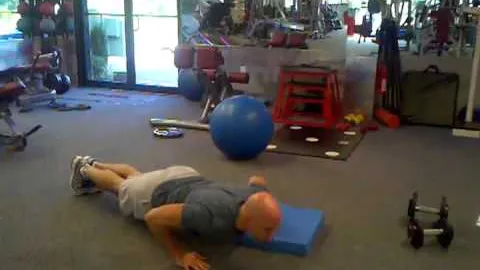
Are you looking for an effective exercise to target and strengthen your upper body? Look no further than the elevated push up! This challenging variation of the traditional push up is not only a great workout for your chest, shoulders, and triceps, but it also engages and activates your core muscles. In this article, we will delve into the benefits of the elevated push up, explain the proper technique, and provide variations to suit all fitness levels.
The elevated push up offers numerous benefits that make it a valuable addition to your exercise routine. Here are some of the key advantages of performing this exercise:
Increased muscle activation: By elevating your hands on an elevated surface, such as a step or bench, you increase the range of motion of the exercise. This results in greater muscle activation, specifically in the chest, shoulders, and triceps.
Core engagement: While the primary focus of the elevated push up is on the upper body, this exercise also engages your core muscles. The elevated position challenges your core stability and strengthens your abs, obliques, and lower back.
Improved shoulder stability: The elevated push up requires increased shoulder stabilization, which can enhance shoulder joint strength and stability. This can be particularly beneficial for individuals who engage in activities that involve overhead movements, such as weightlifting or throwing sports.
Versatility and scalability: The beauty of the elevated push up is its versatility. You can easily modify the exercise to suit your fitness level by adjusting the height of the elevated surface or opting for a regression or progression variation.
To reap the full benefits of the elevated push up and minimize the risk of injury, it is crucial to practice proper technique. Follow these steps to perform the exercise correctly:
Position yourself: Start by choosing a sturdy elevated surface, such as a step, platform, or bench. Place your hands on the surface, slightly wider than shoulder-width apart, and extend your legs behind you, balancing on your toes. Your body should form a straight line from your head to your heels.
Engage your core: Activate your core muscles by pulling your belly button towards your spine. This will help maintain proper form and prevent your hips from sagging or your lower back from arching.
Lower yourself: Bend your elbows and slowly lower your chest towards the elevated surface, keeping your elbows at a 45-degree angle from your body. Continue lowering until your chest is just above the surface.
Push back up: Exhale as you push through your palms, extending your arms and returning to the starting position. Keep your body aligned and maintain tension in your core throughout the movement.
Repeat: Aim to perform 8-12 repetitions of the elevated push up, maintaining control and proper form throughout each repetition.
Whether you're a beginner or an advanced fitness enthusiast, there are various ways to modify the elevated push up to suit your needs. Here are a few variations you can try:
Incline push up: If you're new to the elevated push up or want to focus on building strength, start with an incline push up. Place your hands on an elevated surface, such as a step or bench, and perform the exercise following the proper technique described above.
Decline push up: Looking for an extra challenge? Try a decline push up. Position your feet on an elevated surface, such as a step or stability ball, while placing your hands on the floor. This variation increases the resistance on your upper body, engaging your chest and shoulders to a greater extent.
Single-leg elevated push up: To further engage your core and challenge your balance, perform the elevated push up while lifting one leg off the ground. Alternate legs with each repetition to work both sides equally.
Spiderman push up: Take your elevated push up to the next level by adding a dynamic movement. As you lower yourself towards the elevated surface, bring one knee towards your elbow on the same side of your body. Alternate sides with each repetition to engage your obliques and add an extra coordination challenge.
The elevated push up is an effective exercise that targets and strengthens your upper body while also engaging your core muscles. By incorporating this challenging variation into your workout routine, you can improve muscle activation, enhance shoulder stability, and benefit from its versatility. Whether you're a beginner or a seasoned fitness enthusiast, the elevated push up offers a scalable exercise option that can be easily modified to suit your needs and goals. So why not give it a try and elevate your fitness journey to new heights!
If you're looking for a gym, fitness club or yoga studio, you've come to the right place.
You can find information about gyms in your area. Browse catalog of gyms and find gyms with classes which are you looking for.
On gym page you can find simple information like address, phone or website. You can find list of available classes. You can check availability of personal training or small group classes. On place page you can also see information about open hours.
You can find gyms near you with amenities, courts, studios and equipments.
Use our map to find gym at your city or district.
In Gym Navigator you can find list of exercises with movies for many body parts.
You can browse exercises catalog and find exercises the best of you.
You can also find exercises grouped into workout plans, which you can use to improve you body. Each routine show you exercises one by one and give you possibility to count you progress and count down rest time.